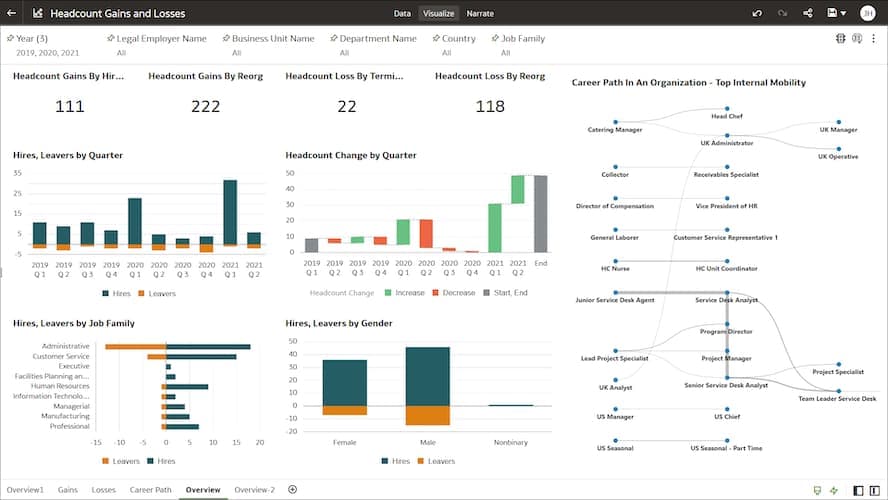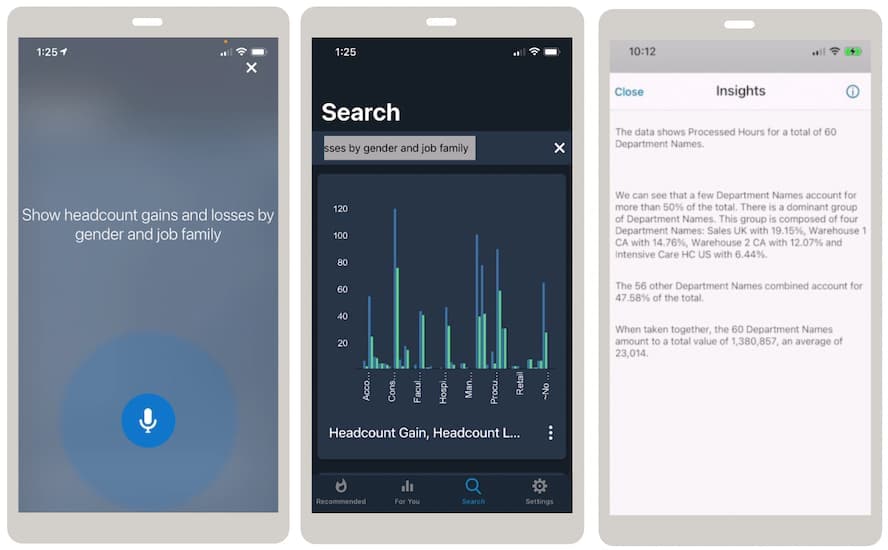
Along with the prebuilt KPIs, dashboards, and reports, users can quickly create visualizations and reports by dragging and dropping objects from business subject area views of their Oracle Cloud Applications data or any available data source. They can query data in natural language with a simple search-like experience—using text or voice—and obtain visual answers or spoken narratives of the results.
Oracle Fusion Analytics includes comprehensive self-service visualization capabilities for creating custom dashboards and reports. Build compelling, visual stories with automated chart and graph recommendations as well as easy drag and drop. Get started quickly with more than forty-five visualization types, such as waterfall bridge report, performance tiles, natural language, maps, and more.

Prebuilt business subject areas view from Oracle Cloud Applications data enables users to quickly create visualizations by dragging and dropping attributes and metrics. These subject areas are designed with metrics and attributes to answer specific business questions and address use cases, from summary levels to the lowest transactional grain analysis. Learn more about subject areas in Data model/pipelines.

Query data in conversational, natural language with a simple search-like experience—using text or voice— and get visual answers or spoken narratives of the results. The mobile app uses natural language processing that supports 28 different languages and various language constructs, such as synonyms, abbreviations, dynamic filters, and calculations. Users can type, text, or speak aloud to ask business questions, such as, What’s our employee churn this month? and get automatically rendered visualizations in return.

Fusion Analytics uses natural language generation to create textual narratives that explain the results of any query or visualization. It automatically updates the narrative as the user adds data, changes filters, or otherwise changes the context—just like a typical data discovery and analysis process.